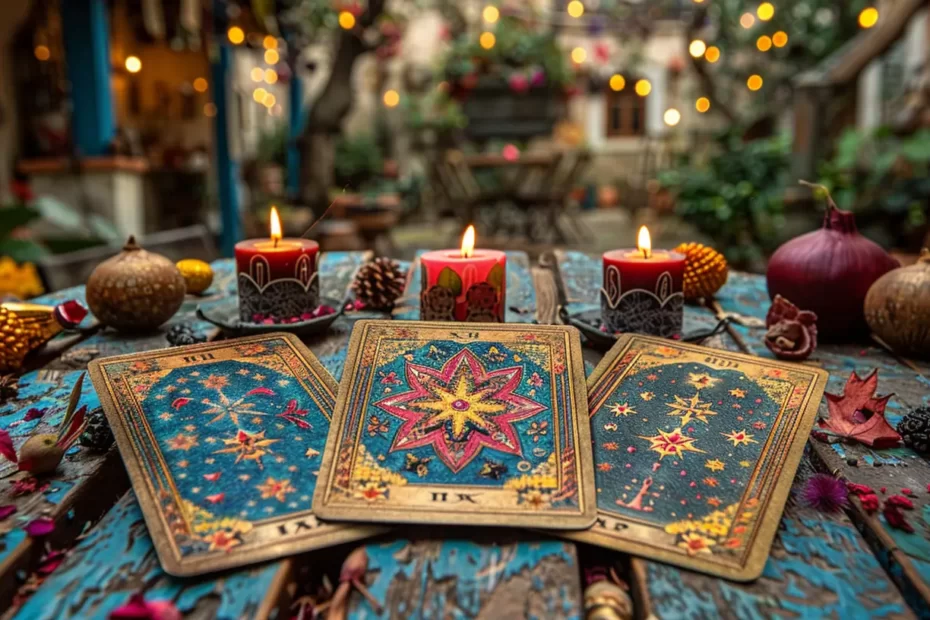Diving into Tarot may seem as intimidating as decoding an ancient grimoire. Yet, there is a proven, simple, and effective method for beginners: the three-card spread. Forget complex layouts and obscure interpretations. Here, simplicity reigns, offering you a gateway to understanding the underlying dynamics of any situation.
One spread, three dimensions
This spread consists of three cards, each representing the past, the present, and the future respectively:
- Past: This first card reveals past influences, those that have shaped the current situation. Understanding where we come from is essential to grasp the context of our question.
- Present: The second card captures the essence of the present moment, reflecting our current state and the immediate challenges we face.
- Future: The last card offers a glimpse into the possibilities and directions our path may take, helping us consider the next steps.
Why should beginners be interested?
Accessible: With only three cards, this spread is far from intimidating, making it perfect for those taking their first steps into the world of Tarot.
Teaching: Each drawn card is a lesson in itself, offering valuable insights into the cycles of life, the impact of our past actions, and how the present can influence our future.
Versatile: Whether you are seeking answers to a specific question or general guidance, this spread adapts to all needs.
Put it into practice
Here’s how you can perform your three-card spread today:
- Clarify your question: Take a moment to reflect on what you wish to discover. Keep this question in mind throughout the spread.
- Shuffle and cut: With your question in mind, shuffle the cards and cut the deck into three.
- Draw three cards: Select three cards from the top of each pile and lay them out from left to right: past, present, future.
- Interpret: Examine each card and think about what it means in the context of your question. Don’t rush; let the images and symbols speak to you.
Conclusion
The three-card spread is more than just a Tarot exercise; it is a method of reflection and introspection. It is not just about predicting the future, but understanding the ebb and flow of our lives, helping us navigate with more awareness and intention. Dive in, and you may be surprised by the depth of revelations that three simple cards can bring.
